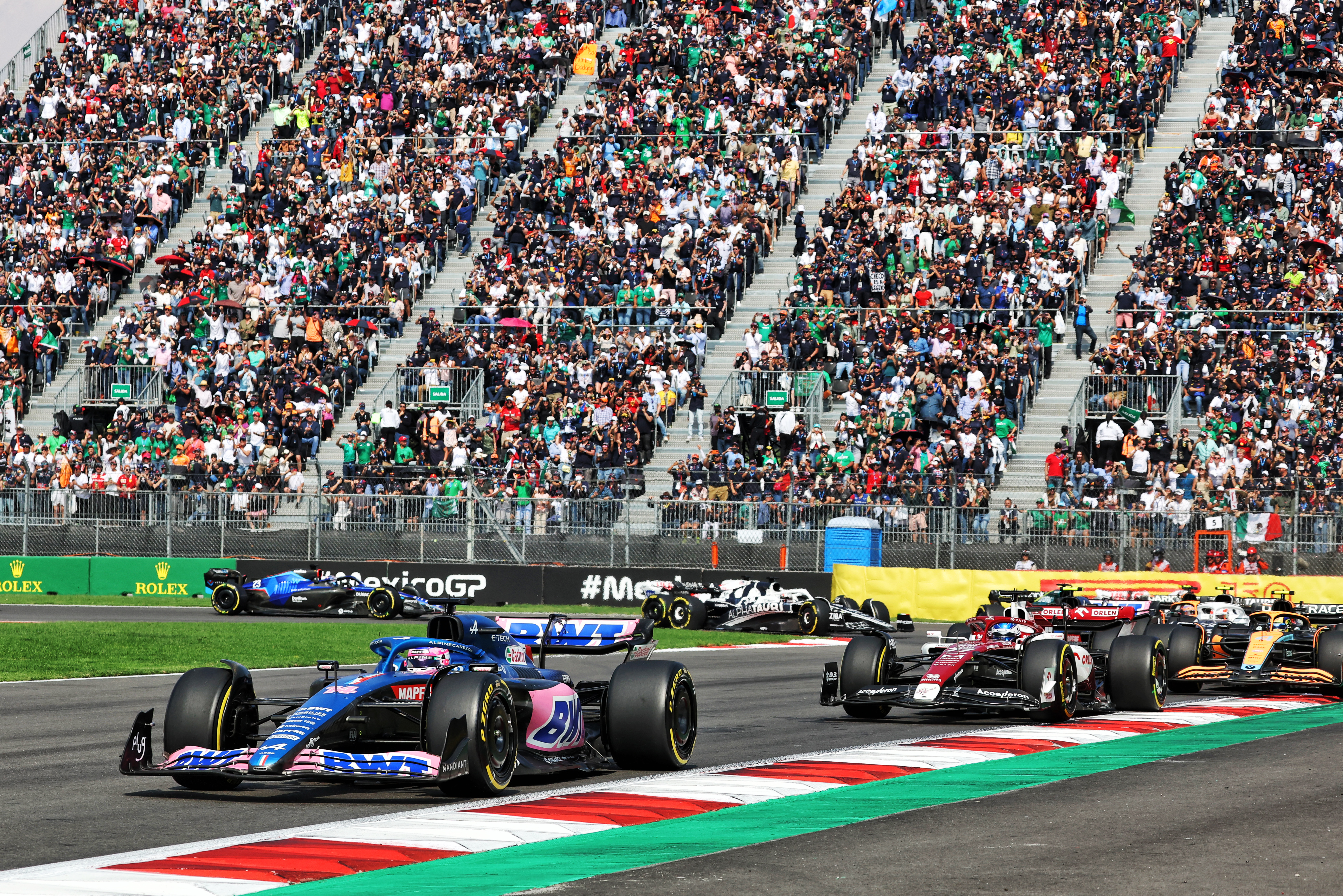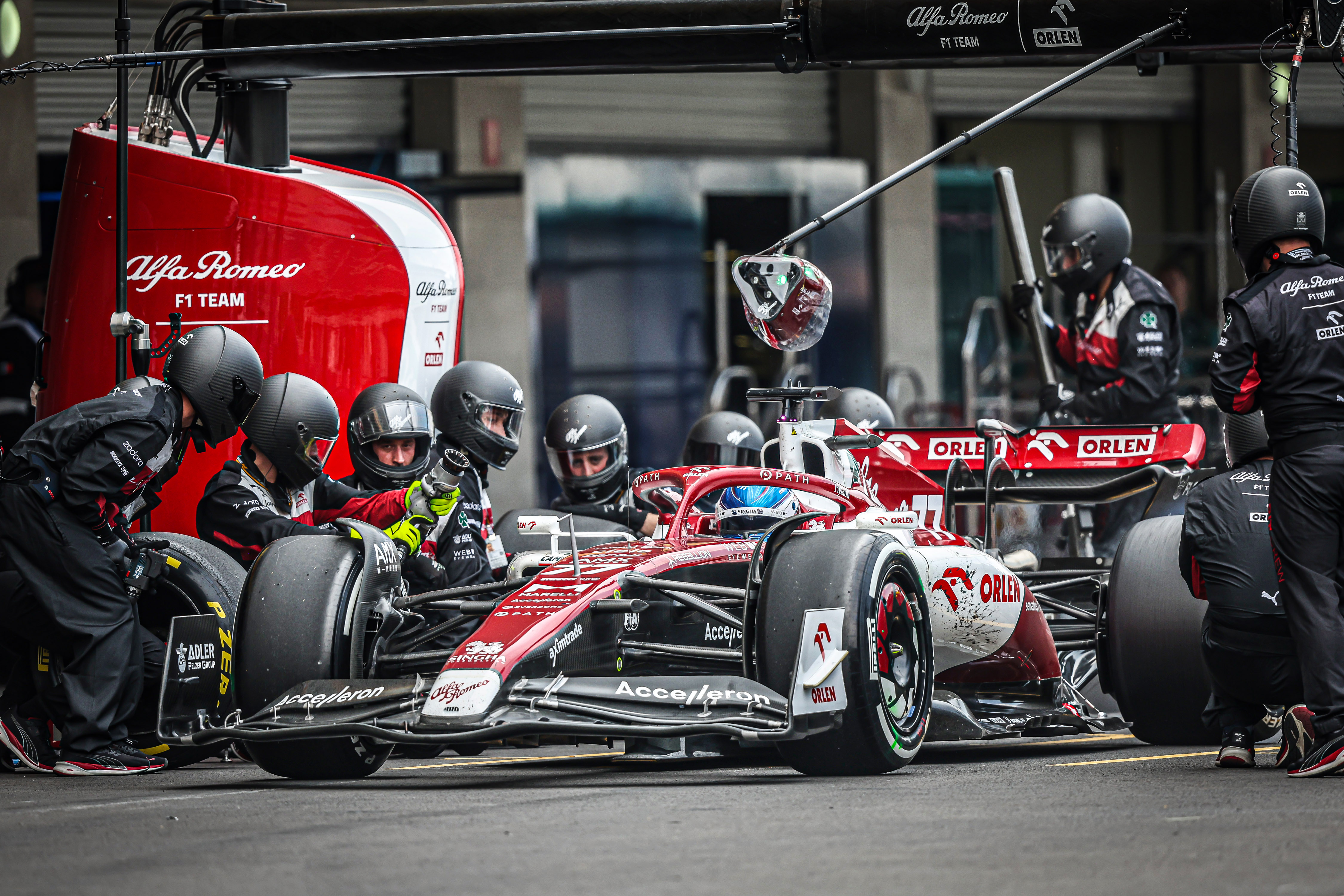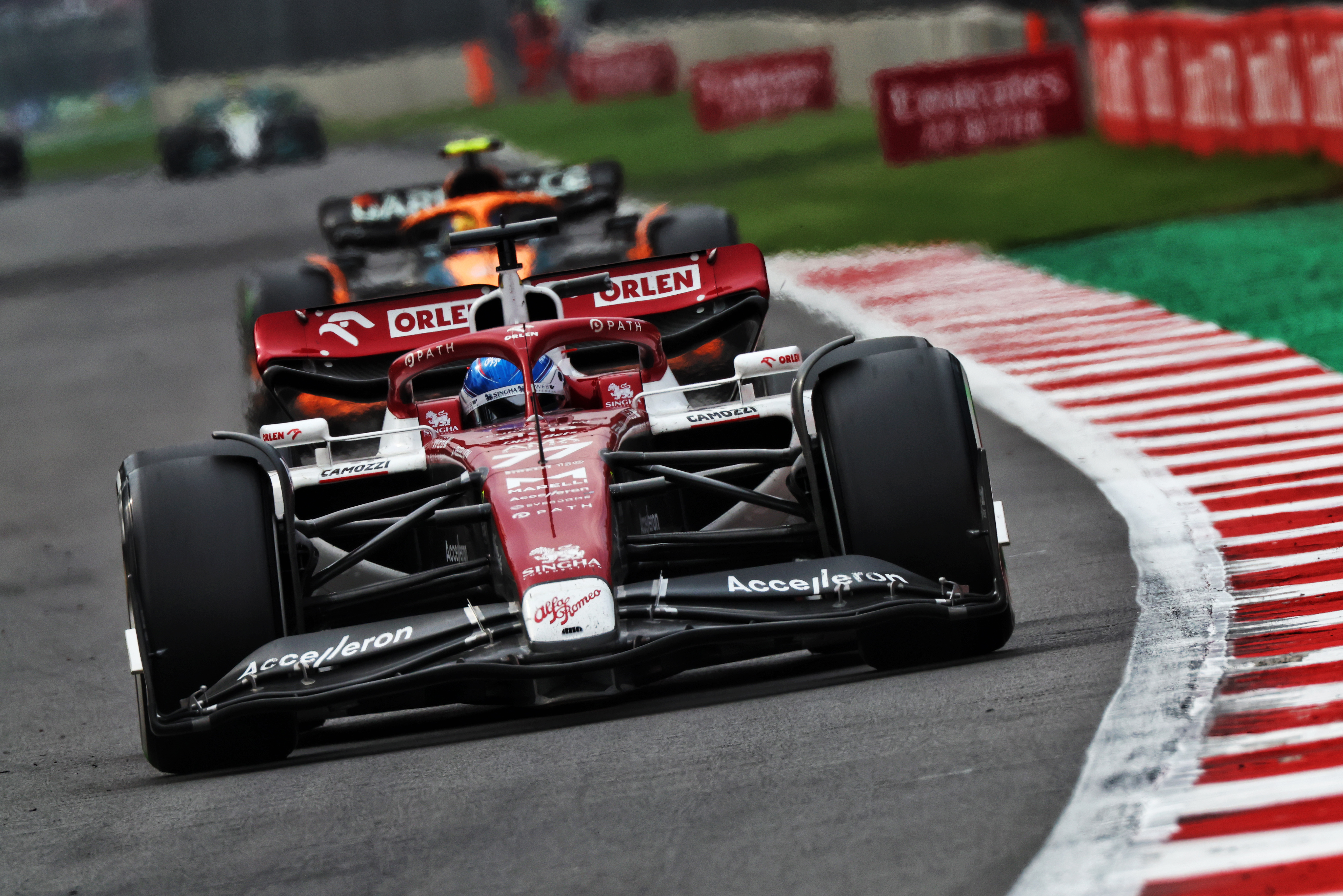Up Next

Alfa Romeo Formula 1 driver Valtteri Bottas starred in Mexican Grand Prix qualifying, splitting the Ferraris, but a difficult race meant he was fortunate to come away with even a point for 10th.
There were several factors at play here – some related to Bottas’s own driving, others to do with strategy and inherent weaknesses still at play in the car, which has performed better since it was upgraded in two stages through the recent Suzuka and Austin weekends but still isn’t quite the best in F1’s midfield.
Firstly, a tendency that has hampered Bottas throughout his F1 career: timidity on the opening lap. His start on the medium compound Pirelli tyre was good – and in fact slightly better than the soft tyred-Ferrari of Carlos Sainz starting one place ahead on the grid.
But having used the slipstream from the cars ahead on the long run to Turn 1, Bottas was too early on the brakes on the inside line, allowing both Charles Leclerc’s Ferrari and Fernando Alonso’s Alpine to sweep comfortably around his outside, dropping Bottas almost immediately from sixth to eighth.
“I need to have a look,” said Bottas afterwards, when asked if he’d played it too safe at the start. “I don’t remember it in detail how it went. For sure Fernando had an exceptional start and he got the place, possibly I could have done something a bit differently.”

The Ferraris, even in their compromised Mexico configuration, were marginally too quick in race trim for Bottas to realistically beat them, even with a perfect performance – and in fact Alfa instructed Bottas not to race Sainz when the Ferrari was coming back through after its relatively early pitstop.
Leclerc (in the slower Ferrari) was 0.295 seconds per lap quicker than the leading Alfa during the first stint, despite running on the less durable soft compound, so really the best Bottas could have done in this race was finish seventh.
He and Alonso took their medium tyres past 38 of the 71 laps, and during that stint Bottas was losing only a tenth per lap on average to the leading Alpine.
Part of this was down to the need to cool the Alfa’s front brakes, so already Bottas was in a defensive mode rather than trying to attack Alonso. Alfa Romeo urged Bottas to close the gap to pick up DRS from Alonso, but he was unable to.
“When I was really close to him I had to start saving the brakes a bit, but, actually, towards the end of the stint I couldn’t keep up with him,” Bottas admitted.
“In the beginning I felt strong but towards the end he was faster. Probably if I would have had clean air in the beginning of the race that would have helped, but it’s hard to estimate by how much.”
Then came a key decision – Alfa opted to put Bottas onto the hard tyre for the rest of the race, mirroring the strategy chosen by Alpine and the McLaren of Lando Norris.

At the start of this phase of the race, Bottas lost another place to the second Alpine of Esteban Ocon, who stopped six laps before Bottas did and had his own hard tyres working a bit better. This dropped Bottas back to a net ninth place once the remaining pitstops shook out.
The Alfa’s poor tyre warm-up on the hard proved costly here, and attempts to repass Ocon once the tyres were into their working range proved fruitless.
“The second stint with the hard, I just couldn’t make the tyres work, really,” explained Bottas – who described his race as “difficult” and said Alfa Romeo thought a medium/soft strategy “wouldn’t make sense for us” so a switch to hards “was always planned”.
“Especially the front axle was always below the working range, so if I could do the race again, I would surely go for the soft tyre. There were some cars that were really flying on the soft tyre.
“I tried the hard tyre in FP1, and it actually felt half-decent, but that was only a handful of laps. Today it felt OK at the beginning but very quickly was below the operating window in terms of temperatures.
“We thought it would be OK, but it wasn’t, but it’s easy to say afterwards. It would have been a very different story with a different tyre – I think if we had the soft tyre for the second stint we would have finished one place ahead.”
Ninth place effectively became eighth thanks to Alonso’s late engine failure, but by then Bottas had been overtaken by Ricciardo’s flying McLaren – on the favourable soft tyre – and at exactly the same moment as Alonso retired the other McLaren of Norris glided easily past on the inside of Bottas using DRS into Turn 1, relegating him to 10th.

Bottas was then caught rapidly over the final six laps by Pierre Gasly’s soft-shod AlphaTauri, which came within 0.7s of denying Alfa Romeo points altogether in this race. Bottas was perhaps fortunate Gasly didn’t quite pick up DRS on the main straight heading onto their final lap.
So it looks as though Bottas is right to say he would have done substantially better on the soft tyre in that final stint, but it’s also true that he was overtaken by Ocon’s Alpine – around the outside at Turn 1 again – and easily by Norris, both of whom were on the same strategy as the Alfa, so there was also a fundamental lack of pace there, and perhaps a bit of reticence on the part of the driver to defend position more robustly.
Overall this looked like a disappointing backslide in the race for Bottas and Alfa Romeo, after such a sensational qualifying effort, though the man himself put a positive spin on things, and the team was delighted to score a point.
“It was actually good, race-pace wise,” Bottas concluded. “Alpine and McLaren they seemed faster, so I think we weren’t far off from where we belong.”





